The beginning of the Russian-Japanese war. Part of 3. Russian army at the turn of the XX century. Theater of war
Tactical thought in Russia was strongly influenced by Dragomirov. On the one hand, the Dragomirov School had a positive effect: he tried to liberate the army from a drill, go to education, develop the “moral qualities of a fighter and commander” on which success in war depends. Dragomirov, continuing the traditions of Suvorov, demanded a more cultural, respectful attitude towards the soldier. Dragomirov sought to instill in the army an offensive spirit, initiative, volitional qualities.
On the other hand, Dragomirov’s school was characterized by an underestimation of the importance of technology in battle. Dragomirov believed that technology has auxiliary value, the main thing is education. He negatively related to the rapid-fire arms like machine guns. He recognized the necessity of a small-arms battle, but preferred the bayonet. Dragomirov was against and fortifications, as they weaken the morale of the soldiers. In addition, Dragomirov’s aspiration to instill in the army offensive tactics led to "excesses" on the ground, when commanders denied the necessity of laying in the attack, digging in and attempting to overthrow the enemy with thick formations and in frontal attack in full height for a blow to the bayonets. And this is at a time when foreign armies paid more and more attention to the rifle chains, the solitary training of soldiers, the ability to use the terrain features and the training of the army on maneuvering the enemy’s flanks.
Initially, such tactics of the Russian army rendered the Japanese a great service. The Japanese troops, using the terrain features, moved crawling and with impunity closely approached the Russian military formations. Already the first battles on the Yalu River showed the flawedness of the Russian tactics: attempts to go into bayonet attack without adequate fire preparation led to large casualties from enemy rifle fire and a general defeat. The bloody lessons of the Russian-Japanese war forced the Russian troops to restructure, to use more modern methods of war. This immediately led to the fact that the Japanese in the battles suffered more casualties than the Russian troops.
It should also be noted a more advanced system of training Japanese gunners at the initial stage of the war. Unlike the Japanese gunners, the Russians were not trained in shooting from closed positions. After the Russian gunners learned to fire from closed positions, they almost always turned out to be more effective in combat than their opponents. Russian gunners won almost all artillery duels.
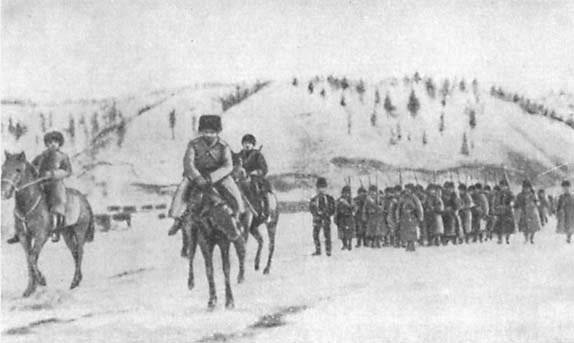
The transfer of troops through Lake Baikal
The number, organization and equipment of the army
The total number of the standing army of the Russian Empire at the beginning of the war was equal to 1,1 million. In addition, taking into account the reserve and reservists, it was possible to increase the size of the army to 3,5 million. The troops were reduced to divisions and corps. Usually the corps consisted of two infantry divisions of a double brigade composition. The brigade consisted of two regiments of four-battalion (in the Siberian corps - three-battalion) composition. The infantry division was attached to an artillery brigade of 6-8 batteries. In addition, the corps included a cavalry division of four-regimental 6 squadrons in each. The corps also included engineering connections and rear units.
The infantry was armed with a 7,62-mm (3-linear) rifle of the 1891 model of the year (Mosin rifle, three-line). Rifle weight - 4,5 kg. Length - with bayonet / without bayonet - 1738 / 1306 mm (infantry), 1500 / 1 232 mm (dragoon and sample 1891 / 30). Sliding shutter. Rate of Fire - 10 shots per minute. Shop on 5 ammo. Sighting range - 2 thousand meters. In general, the Russian infantry was armed better than the Japanese. If the Japanese rifle Arisaka was at the level of the Russian Mosin rifle, then about half a million guns of the outdated Murat system were in service with the Japanese army.

Russian 76-mm gun sample 1900-1902. significantly superior to the Japanese counterpart. The 76-mm field-firing gun of the 1900 model of the year was characterized by high martial qualities and was one of the best field guns in the world, being at the level of the French and German 75 and 77 mm guns. The maximum firing range of the gun - 8,5 km. The rate of fire 10-12 minute shots. A cannon fired a 6,4 kg projectile with a muzzle velocity high for those years in 590 m / s. In 1902, the three-inch was improved. The mass of the gun was lightened, the carriage and piston slide were improved. Since 1903, both artillery guns began to enter the army. The divisional gun of the 1900-1902 model of the year became the basis of the artillery of the Russian Empire.
Russian guns in terms of range and rate of fire surpassed the Japanese, but did not have the grenades necessary for the destruction of light structures (fences, mud walls, etc.), which the Japanese infantry used as shelters. The average range of the Russian cannon reached 6-7 km, and the average combat range of the Japanese artillery was 4,5 km. Regarding the rate of fire, the Russian cannon surpassed the Japanese by half. In addition to the guns of the 1900-1902 model, the Russian troops had the old guns of the 1877 model and the 1892-1895 model, which acted well against the clay-clay fortifications.
The weakness of the Russian army was the lack of mountain artillery in Manchuria, which was extremely necessary for this theater of operations. The Japanese had mountain tools in sufficient quantities. Just before the war, Obukhov Plant was given an order for the manufacture of mountain tools. The negative situation was heavy instruments. Russian gunners could carry out mounted fire only with the help of an outdated 6-inch mortar model 1887, with a small range and rate of fire. In addition, mortars broke easily. Therefore, they were more of a burden than help in battle.
Practically there was no army and machine guns. The Russian field army had only 8 machine guns, and by the Mukden battle their number was reduced only to 56. In relation to other types of technical equipment, the Russian army also did not shine. So, in the first period of the war, the use of telephone and telegraph was too underdeveloped.
The bad Russian military also knew the Manchurian theater of military operations. Russian military department in 1901-1902 conducted topographic surveys in Manchuria, but the map was made only up to the Liaoyang parallel, and to the north there were only surveys of individual routes. The Japanese were well acquainted with the theater of war, both from the experience of the Sino-Japanese war, and as a result of a special study of theaters in anticipation of war with the Russian Empire.
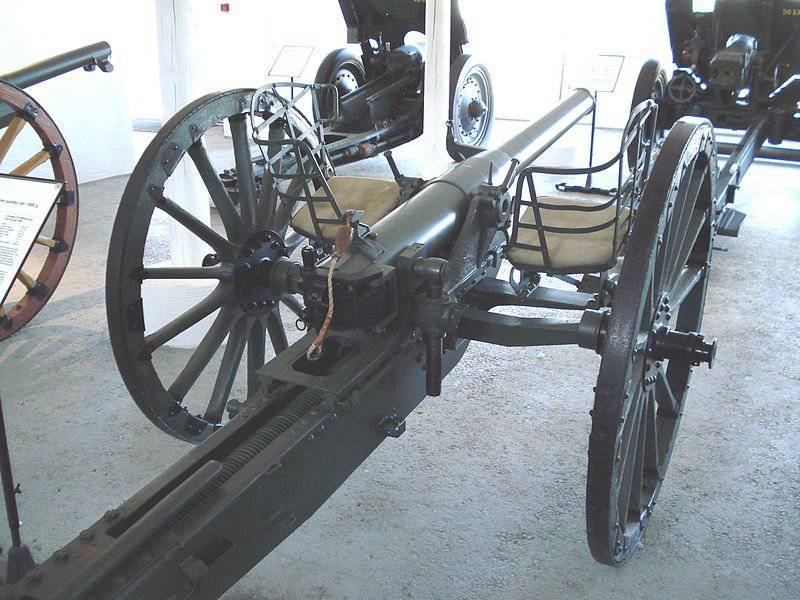
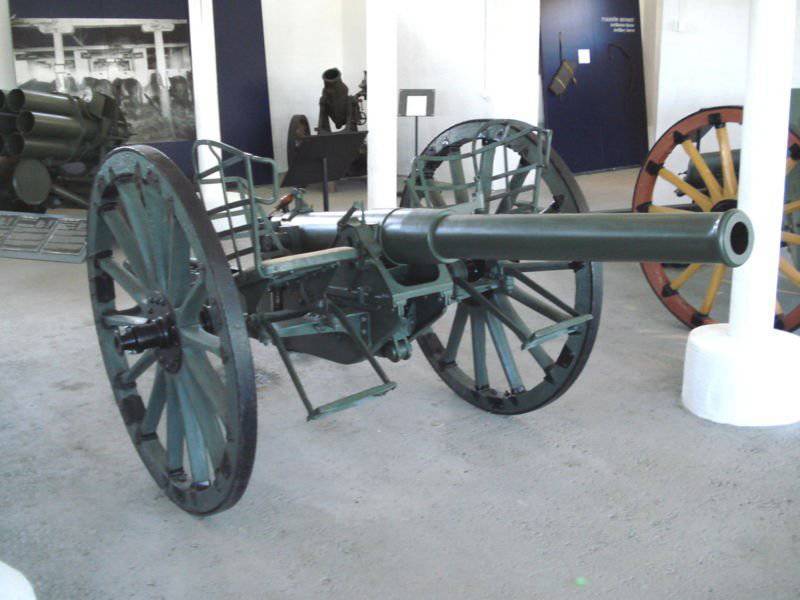
3-dm (76-mm) field speed gun obr. 1900 of the year.
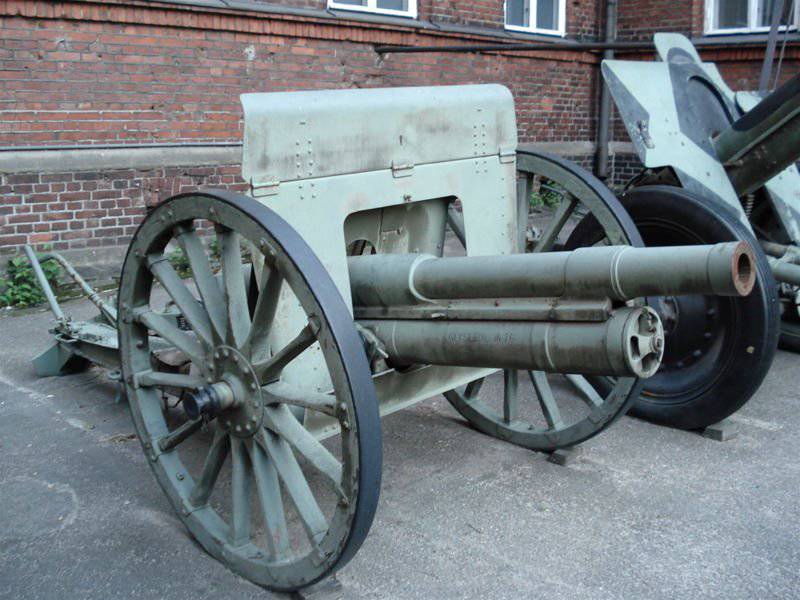
76-mm divisional gun obr. 1902
Rear organization
In fact, the Russian army was dependent on a single railway line, which greatly impaired its operational capabilities. Later, a portable railway was transferred from European Russia around 900, but they were not used properly. Unlike the Japanese, who had developed a rather wide activity for the development of railway communication lines in the rear of their army, the Russian command did not create a broad base. The pre-war Shushun railroad, about 50 km long and stretching parallel to the front, could not be fully utilized. Later, a branch from Sancuyzi to Saloun after the battle of Mukden was captured by the Japanese, along with a large number of rolling stock.
River routes in the organization of the Russian rear were not used. Local horse-drawn transport is also not really used. The Russian command only thought about the organization of dirt roads and took the first steps in this direction, in contrast to the Japanese, who took timely measures to equip the dirt tracks. The Russian command did not have the necessary tools, nor any leading technical personnel who could organize such work. Thus, the prewar military engineering unpreparedness of the region affected. Besides, there were no hands. Attempts to organize the construction of roads with the help of the local population have failed. The Manchurians not only did not want to work and under various pretexts evaded the assistance of the Russian army, but also gathered in gangs, attacked the railway, horse-drawn carts, dispersed the Chinese accompanying them, seized food supplies. Manchurian predatory raids forced the Russian command to withdraw significant forces to guard the railway and ensure the normal operation of the rear. The local population has not forgotten about the Ihetuan uprising 1898-1902. and was hostile to the Russians.
In order to organize the supply, the summer command 1904 of the year organized from local means 50 horse-drawn and 10 pack packs. Some of these transports were handed over to the field army, since the Siberian units had insufficient wagon train, and the formations from the European part of Russia had too heavy carts for local roads. After the battle of Mukden, when much of the transport was lost, it was necessary to form a new batch of horse-drawn transport. But because of the sabotage of the local population, this work was delayed until the end of the war.
The bulk of the Russian troops had a 11-day supply of provisions. In the corps train there was a stock for three days, in the division one — for four days, in the regiment one — a day and a half, and with them the soldiers carried the stock on the 2 1 / 2 of the day. In general, with some shortage of ammunition, the army could break away from the railway for a wider operational maneuver. The supply of food in the army for this was. But Kuropatkin continued to adhere to cautious tactics of warfare, preferring not to break away from the supply bases.
The location of the wagons was poorly organized and there were great congestion during the retreat. At signs of defeat, Chinese commanders simply threw carts and ran away. The wagons are stuck in the deep ruts of bad Manchu roads. Many warehouses and shops were located in the front line, and when the troops retreated, they fell to the Japanese.
The command did not know much about the local food base; therefore, the considerable food resources of the Manchurian theater were not used in the first period of the war. Virtually all food was shipped by rail from Russia. Manchuria had rich reserves of flour, but flour and grain were brought from the European part of Russia. Moreover ordered food from America. Nothing was brought from America. But local and American dealers have heated their hands well. In the future, food procurement was carried out in Manchuria.
Kuropatkin personally paid great attention to the supply of troops and took care of the soldiers. However, due to the total complexity of the theater of operations and the abuse of some officials and businessmen, there were also outbreaks of diseases caused by unfit food. During the war, the army lost about 13 thousand people dead from diseases, a significant number of soldiers were declared unfit for further service.
The organization of artillery supplies also had shortcomings, despite the abundance of shells in Harbin. There was no shortage of clothing supplies, but the quality of a piece of clothing, especially shoes, was poor. The Russian army in this war clearly lacked “pinpoint repression” against embezzlers, speculators and thieves.
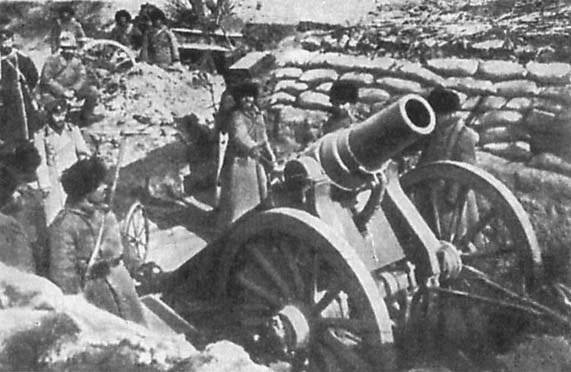
Russian mortar battery in combat position
Theater of military operations
North Manchuria is a plain that has two significant mountain systems — the Great Khingan Range and the Changboshan (Changbai Mountain) Range. Big Khingan in its northern part has a mountain spur Ilhuri-Alin, the continuation of which has the name Small Khingan. Both of these mountain systems are connected by the mountainous valleys of the Songhua River and one of its tributaries, the Nonni. In administrative terms, Manchuria was divided into 3 provinces - Heilongjiang, Girin and Mukden, and geographically it is divided into North and South. The border between North and South was north of the city of Jilin. The border between Russia and Manchuria passed along the Amur River. Argun was also a border river.
The movement from South Manchuria to the North had no particular obstacles other than the Songhua River and the valleys of its tributaries. The Amur, Argun, Sungari, Bolshoi and Maly Khingany rivers could be used as defensive lines.
The big problem of the Russian army was the underdevelopment of military infrastructure. Northern Manchuria was poor in roads, moreover, during the rainy period they became impassable. The most important junction of the routes leading from the Trans-Baikal, Amur and Seaside regions to South Manchuria was Jilin. North Manchuria numbered about 1900 million in 9. The population was grouped mainly in the area of Harbin, Jilin, a large shopping center of Tsitsikara, in the basin of the Sungari River. The border areas with Russia were almost not populated, as were the 2 / 3 of North Manchuria.
South Manchuria is an area that has two mountain ranges, separated by the vast valley of the Liaohe River. Liaodong Mountains are located to the east of Liaokhe, and to the west of this river is the Lyaosi Highlands. The Liaodong Mountains are the southern spurs of the Chanboshan mountain system and represented a serious obstacle to movement from Korea to the Liaohe River basin. South Manchuria ended up on the Liaodong Peninsula.
The peculiarity of the South Manchurian Theater is a significant number of rivers. From the rivers of the Liaodong Bay basin, the main is Liaohe. Its left tributaries are Hunhe and Taijihe. The right tributary of the Tai Chi River is the Shahe River. Of the rivers that flow into the Gulf of Korea, Yalu is the most significant. This river, in some places swampy territory, then was a serious obstacle on the routes from Korea to South Manchuria.
In the dry season, the dirt roads of South Manchuria were very dusty, in the rainy season they became almost impassable not only for carts, but even for people. Therefore, the best time in Manchuria was considered to be autumn, when the heat subsides and the rains stop. Summer is hot and rainy. A major hub of paths, the commercial and industrial center was Mukden. The second most important city is Liaoyang. The port where the Japanese could land was Yingkou, located at the mouth of the Liaohe.
The population numbered more than 9 million. It was significantly enlarged due to the massive migration of Chinese here, fleeing floods and seeking employment. The most densely populated valley of the Liao He and the coast of the Gulf of Liaodong.
Theater Russian-Japanese War. Source: N. Levitsky. Russian-Japanese War 1904-1905
Railways. By the beginning of the Russian-Japanese war, the Siberian Railway was operating. Circum-Baikal section of the road was completed during the war. Before it was built, the troops were transported through Lake Baikal on ships, and when the lake was ice-bound, the troops marched on ice or moved along the railway line, the straight ice of the huge reservoir.
The Chinese Eastern Railway was in Manchuria from Manchuria Station to Pogranichnaya Station. From Harbin, the South Manchurian Railway ran south, passing through Mukden and ending at Port Arthur. Due to the shortage of building materials and the need to accelerate the pace of construction, the technical conditions of the construction site were simplified, which worsened the quality of the road.
It should be noted that the CER from the very beginning of its existence was in a hostile environment. Initially, she was attacked by local residents, mainly boatmen, coolies, couriers and people associated with these professions, who believed that the construction of the railway would undermine their livelihoods. Russia was forced to form an entire guard building of the CER. The attacks began in 1899. In 1900, Manchuria was seized by the Ihetiuan uprising. By the end of the summer, the rebels captured a large part of the railroad. The government had to strengthen the protection of the CER. During the war with Japan, for the protection of the railway, which served as the only communication route of the Russian army, it was necessary to allocate large forces - up to 50 thousand people. In addition, the southern section of the road was extremely unfavorable for the Russian army, the railway line was perpendicular to the supposed operational direction of the Japanese from the Korean Peninsula.
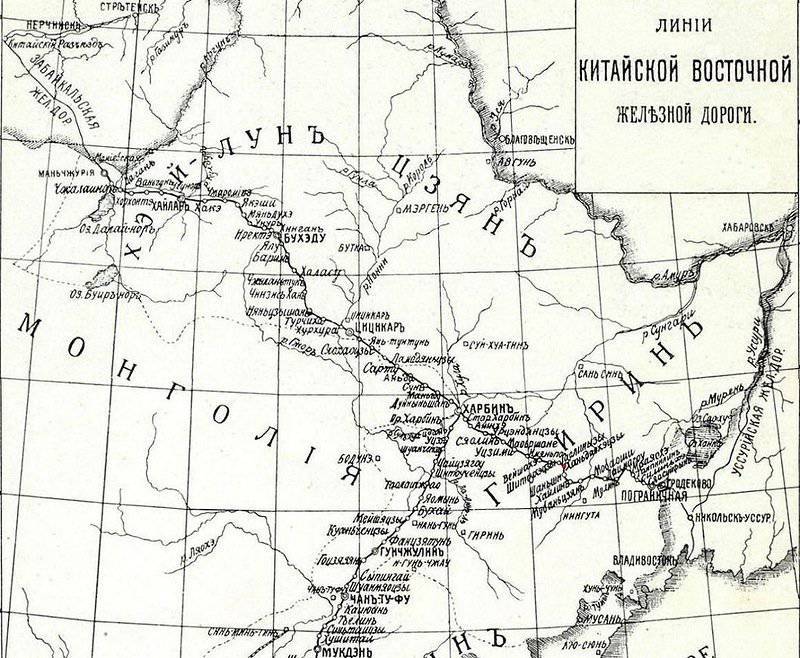
Maritime Theater. The actions of naval forces unfolded in the Japanese and Yellow Seas, as well as in the northern part of the East China Sea. In the hands of the Japanese were the Korean and Tsushima straits that connected the Sea of Japan with the Yellow. There were five Japanese naval bases in the area. Among them was the main base of the Japanese fleet - Sasebo. In addition, the Japanese had in the inland Sea of Japan, which washes the western part of the southern coast of Honshu Island, from the south-west the Kyushu coast, from the south the Shikoku coast, and also on the shores of the Pacific Ocean several more naval bases well equipped with repair and shipbuilding enterprises, docks, arsenals, coal depots. The Japanese fleet had a well-developed naval infrastructure, which was prepared on the eve of the wars with China, and then with Russia.
The Korean coast of the Sea of Japan, which was poor in bays and islands, was not particularly interested in the Japanese. Here the Tsushima and Korean Straits were of primary importance for Japan. Of greater interest to the Japanese were the Yellow Sea with the Korean and Liaodong bays. In the Yellow Sea, the conditions for the navigation of ships were better, there were a significant number of islands, and on the coast of the Korean Gulf there were objects suitable for disembarking landing forces.
Russia had only two naval bases, Vladivostok and Port Arthur. The shortest path between them passed through the Straits of Korea and Tsushima, where the Japanese had the most powerful naval fist. The possibility of Korea joining Russia and creating a more convenient naval base on the Korean Peninsula, which existed in the second half of the 19th century, was not realized.
Russian military ports were in the development stage and could not meet all the needs of the fleet. The workshops of Vladivostok, where there was a dry dock for large ships, were only half equipped. Coal reserves were not enough. Port Arthur as a naval base had significant drawbacks. In Port Arthur there was a tight inner basin and a narrow exit from the port to the sea, along which large ships could pass only at high tide. In addition, there were no docks for large ships or workshops in Port Arthur. The base experienced a shortage of ammunition and coal. In 70, nautical miles from Port Arthur and 90 miles from the mouth of the Yalu River, Elliot Islands were located, which were suitable for the fleet, which monitors Port Arthur.
The Dalniy (Dalian) commercial port, located in the bay on the southeastern side of the Liaodong Peninsula, was well equipped for unloading large ocean-going steamers and was the final port of the CER. During the war, he acquired extremely disadvantageous importance for the defense of the fortress of Port Arthur. The Japanese quickly captured the Far and made it a haven for unloading troops, artillery and various military goods.
Operational directions of the Japanese army. The movement of the Japanese armies towards Liaoyang took place in three main directions. The path of the 1 Army of Kuroki at a distance of 220 km stretched from Sakhodzi through Fynhuangchen and Fenshulinsky Pass to Liaoyang. From the main road at Selyuzhan there was an additional road, which at the village of Thavuan again connected with the main one. Another auxiliary route went along the line Chhansen (on Yalu) - Kuan-diasan - Liaoyang. All paths were connected by difficult mountain paths.
The main operational direction of Nozu's 4 Army was the 170 km Dagushan-Liaoyang road. The following ways could serve as auxiliary routes: Dagushan - Heichen and Dagushan - Gaizhou. All three roads, leaving Xuyang, went through mountain ranges and were connected by several impassable passes. This direction allowed to cut off Port Arthur with the main forces of the Russian army.
The main operational direction of the 2 and 3 of the Japanese armies was the strip length of about 350 km. Port Arthur-Gailzhou-Liaoyang. Another operational direction of the 2 th and 3 th army took place along the line Bitszyvo - Jinzhou. In addition, the Liaohe River Valley in the direction of Yingkou-Liaoyang was used as a river path. The Yingkou-Newchuang-Liaoyang road was also used here.
It must also be remembered that the connection of the Japanese armies with Japan itself was only by sea. Therefore, to land the army on the mainland and supply them was possible only with the domination of the Japanese fleet at sea. Therefore, the first objective of the Japanese command was the destruction (serious weakening) or the blocking of the Russian squadron in Port Arthur.
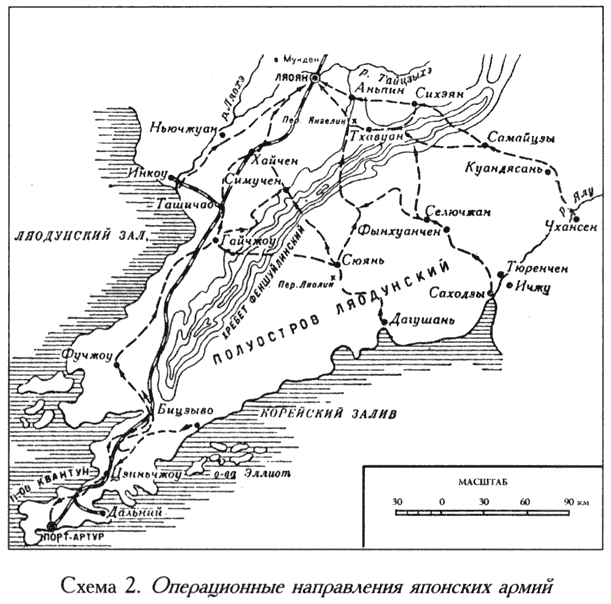
Japanese Army Operational Directions
To be continued ...
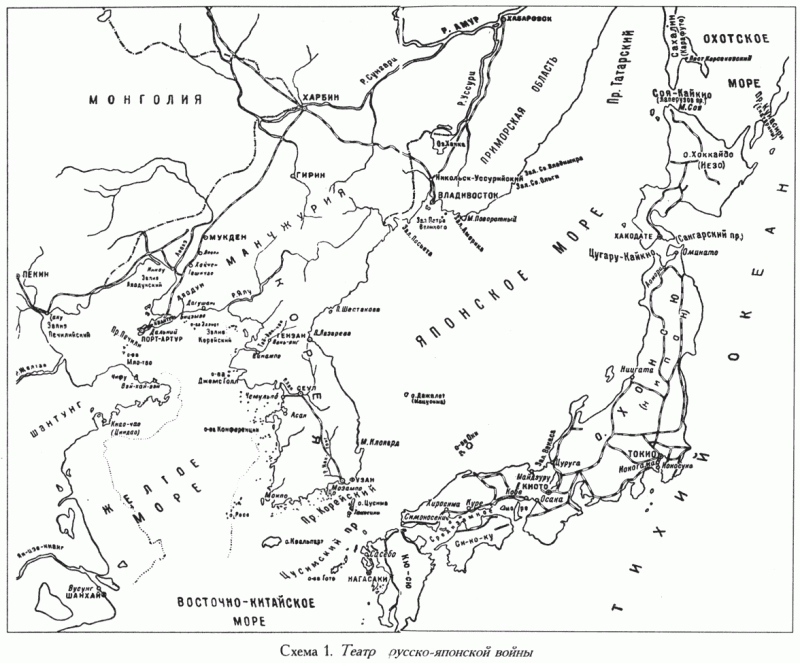
Information